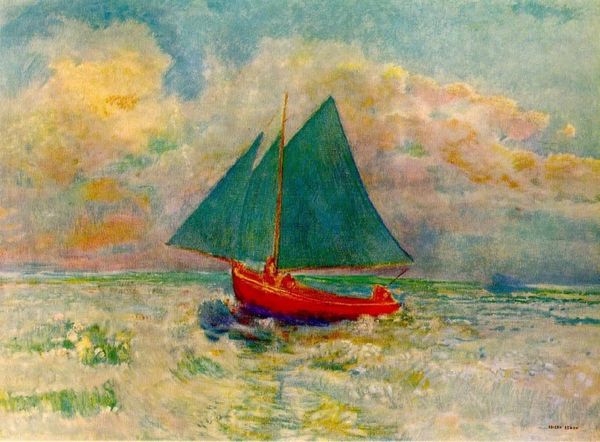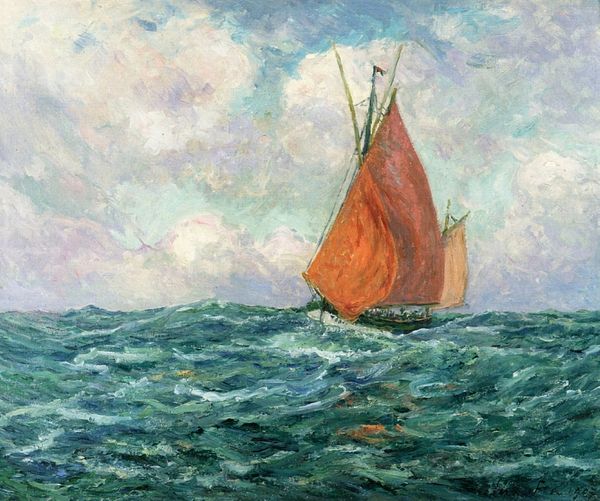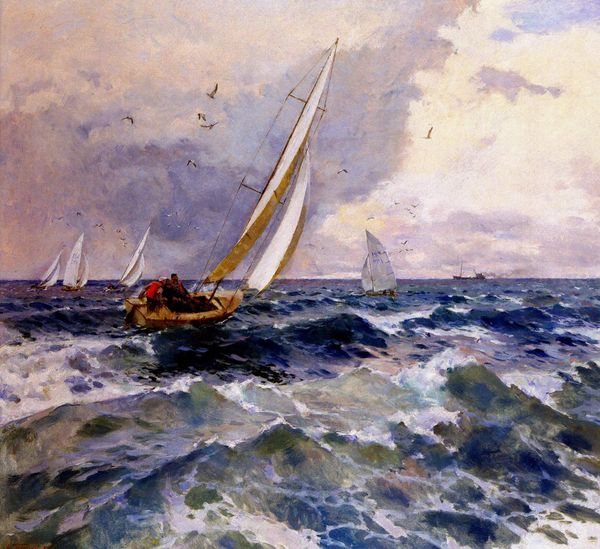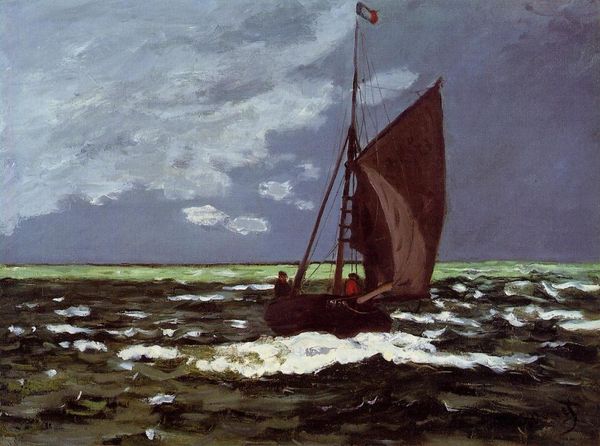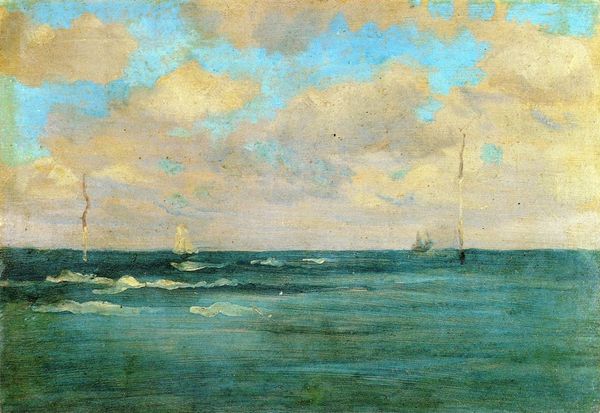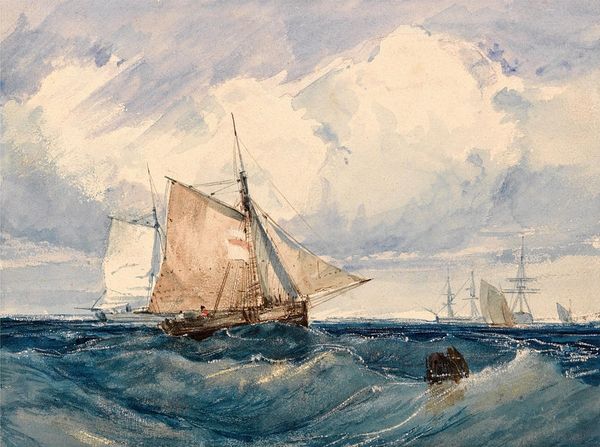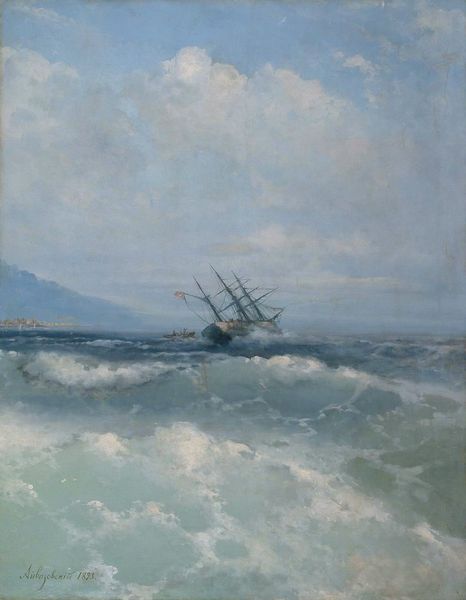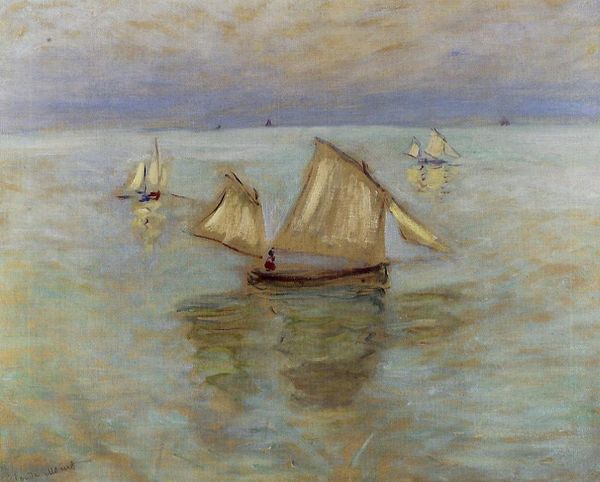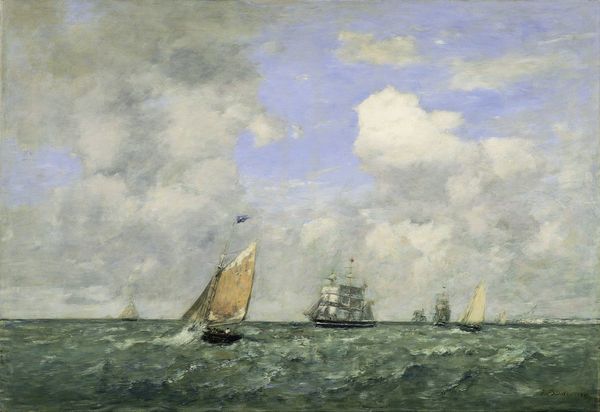
Copyright: Public domain
Curator: Look at this arresting image by Ivan Konstantinovich Aivazovsky. This painting, titled "Marina," dates to 1892, late in the artist’s prolific career. He rendered this seascape using oil paint, layering it with a distinct impasto technique. Editor: Immediately, I’m struck by the light. It's a stormy scene, clearly, but that lone, brightly lit sail and the turquoise crests of the waves give the piece such buoyancy. It feels almost hopeful, despite the turbulent sea. Curator: Hope in the face of nature's brute force is central to understanding Aivazovsky’s vision. The sea carries symbolic weight. Note the detail: the cresting waves are almost claw-like, as if reaching for the ship. Editor: I am interested in his production, too. We see visible brushstrokes. Aivazovsky applies paint quite liberally, almost sculpting the waves. Knowing the artist purportedly painted extremely quickly—and almost always from memory—underscores the power of the creative labor. Did he do on-site sketches? Curator: Rarely. That speed you mention contributed to the heroic ideal, but it also reinforces specific iconographies. The ship endures through trials, battling forces; look at the angle. The curve of its masts practically mirrors that of the waves below, an allusion to mankind’s continuous negotiation between spirit and earthly domains. Editor: Negotiation indeed, but let’s not divorce the vessel from a practical dimension. This sort of ship represents global trade, exploration. So the painting visualizes material exchange between countries and acknowledges the industry of shipbuilding that depends on this kind of seagoing object. Curator: That interplay between material concerns and spiritual longings gets at something fundamental. It reflects anxieties and dreams embodied by a burgeoning industrialized world in 1892, anxieties Aivazovsky channeled using familiar tropes, if that makes sense? Editor: It does, completely. Recognizing the raw materiality alongside what is represented in it makes a world of difference. Now I notice that little flourish of impasto even more! Curator: So, "Marina" presents us with both a symbol of romantic perseverance and a glimpse into 19th century modes of artistic production and worldviews. Editor: Agreed; a beautiful, complex, layered artwork.
Comments
No comments
Be the first to comment and join the conversation on the ultimate creative platform.



